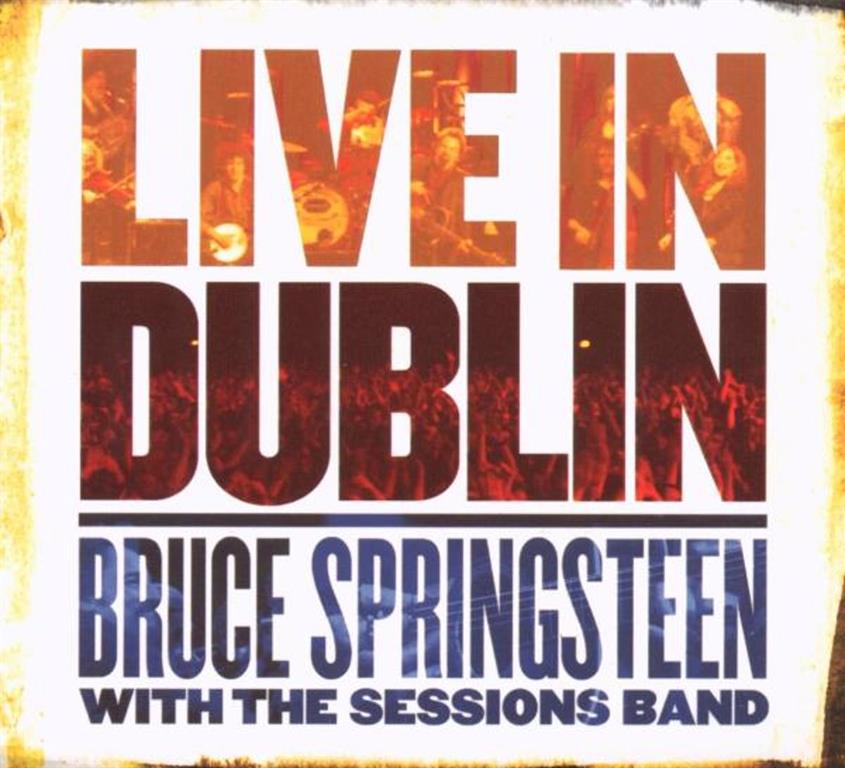Coverinfo
Bruce played the song 63 times:
It was not released on the album" the Seeger Sessions" but it was a steady song during the Seeger Sessions Tour. The songs was released on the Live In Dublin album and home video. At the end of the Seeger Sessions Tour, the three-night stand at Point Theater in Dublin, Ireland, (17-18-19 Nov 2006) was filmed with nine High Definition cameras. A selection of 23 songs from these three nights was officially released on 05 Jun 2007 on the Live In Dublin album and home video, credited to "Bruce Springsteen With The Sessions Band". "Seeger" was dropped from the band's name for this release, apparently due to the fact that many of the songs are Springsteen originals from his earlier records, or covers that are not related to Pete Seeger. The song was performed in duetting Springsteen / Marc Anthony Thompson.

"... this is a song that we, uh, we learned as we went into New Orleans, it was kind of the theme song of the city and, uh, like I said, I´ve been telling folks every night, we play it with some trepidation, uh….and, but there´s a few verses that I, that I discovered in, in a, a book that I had, that I hadn´t heard sung very often, really kind of opened this song up for me and actually the Weavers sing it on their version but there was a (some people cheer) yes, we got some Weavers´ fans….but, uh….this kind of, I guess those verses really kind of explain, uh, what we´re trying to do up here tonight and, uh, so I wanna send this one out to you saying thanks, God bless for coming out, thank you very kindly…."
Bruce performed the song 63 times:
2014-05-03 New Orleans Fairgrounds, New Orleans, LA
2012-04-29 New Orleans Fairgrounds, New Orleans, LA
2009-05-03 Madison Square Garden, New York City, NY
2006-11-21 Odyssey Arena, Belfast, Northern Ireland
2006-11-19 Point Theatre (The), Dublin, Ireland
2006-11-18 Point Theatre (The), Dublin, Ireland
2006-11-17 Point Theatre (The), Dublin, Ireland
2006-11-14 Hallam FM Arena, Sheffield, England
2006-11-12 Wembley Arena, London, England
2006-11-11 Wembley Arena, London, England
2006-11-09 NEC Arena, Birmingham, England
2006-11-07 Sportpaleis, Antwerp, Belgium
2006-11-06 Kölnarena, Cologne, Germany
2006-10-30 Globen, Stockholm, Sweden
2006-10-29 Oslo Spektrum, Oslo, Norway
2006-10-28 Parken Stadium, Copenhagen, Denmark
2006-10-25 Pabellón Deportivo, Santander, Spain
2006-10-24 Palau Sant Jordi, Barcelona, Spain
2006-10-22 Plaza De Toros De Granada, Granada, Spain
2006-10-21 Estadi Ciutat De València, València, Spain
2006-10-19 Plaza De Toros De Las Ventas, Madrid, Spain
2006-10-13 Sportpaleis Ahoy, Rotterdam, The Netherlands
2006-10-12 Color Line Arena, Hamburg, Germany
2006-10-10 PalaLottomatica, Rome, Italy
2006-10-08 PalaMaggiò, Caserta, Italy
2006-10-07 Arena Santa Giuliana, Perugia, Italy
2006-10-05 Arena Di Verona, Verona, Italy
2006-10-04 Villa Manin, Udine, Italy
2006-10-02 PalaIsozaki, Turin, Italy
2006-10-01 PalaMalaguti, Bologna, Italy
2006-06-25 PNC Bank Arts Center, Holmdel, NJ
2006-06-24 PNC Bank Arts Center, Holmdel, NJ
2006-06-22 Madison Square Garden, New York City, NY
2006-06-20 Tweeter Center At The Waterfront, Camden, NJ
2006-06-19 Saratoga Performing Arts Center, Saratoga Springs, NY
2006-06-17 DTE Energy Music Theatre, Clarkston, MI
2006-06-16 Blossom Music Center, Cuyahoga Falls, OH
2006-06-14 Bradley Center, Milwaukee, WI
2006-06-13 First Midwest Bank Amphitheatre, Tinley Park, IL
2006-06-11 Xcel Energy Center, Saint Paul, MN
2006-06-10 Wells Fargo Arena, Des Moines, IA
2006-06-06 Sleep Train Pavilion, Concord, CA
2006-06-05 Greek Theatre, Los Angeles, CA
2006-06-03 Glendale Arena, Glendale, AZ
2006-05-31 Verizon Wireless Music Center, Noblesville, IN
2006-05-30 Germain Amphitheater, Columbus, OH
2006-05-28 Nissan Pavilion, Bristow, VA
2006-05-27 Tweeter Center For The Performing Arts, Mansfield, MA
2006-05-21 Hovet, Stockholm, Sweden
2006-05-20 Oslo Spektrum, Oslo, Norway
2006-05-17 Festhalle, Frankfurt, Germany
2006-05-16 Heineken Music Hall, Amsterdam, The Netherlands
2006-05-14 Pavelló Olímpic De Badalona, Barcelona, Spain
2006-05-12 DatchForum, Milan, Italy
2006-05-10 Palais Omnisports De Paris-Bercy, Paris, France
2006-05-08 Hammersmith Apollo, London, England
2006-05-07 Manchester Evening News Arena, Manchester, England
2006-05-05 Point Theatre (The), Dublin, Ireland
2006-04-30 New Orleans Fairgrounds, New Orleans, LA
2006-04-25 Convention Hall, Asbury Park, NJ
2006-04-25 Convention Hall, Asbury Park, NJ
2006-04-24 Convention Hall, Asbury Park, NJ
2006-04-20 Convention Hall, Asbury Park, NJ